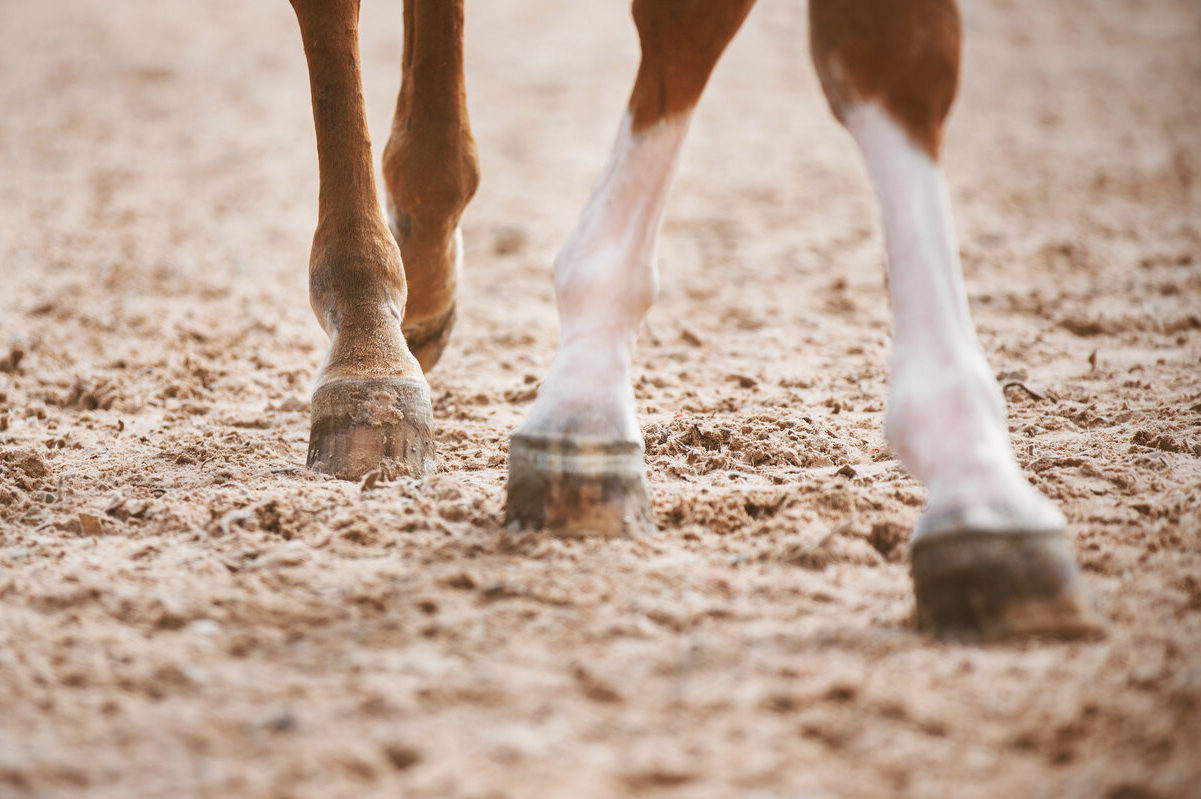 I decided not to write a real article on mud fever, because there are already plenty of articles, often very well written, on this subject. However, what actions to try step by step is less clear! So, let's go!
I decided not to write a real article on mud fever, because there are already plenty of articles, often very well written, on this subject. However, what actions to try step by step is less clear! So, let's go!
In spring and autumn, many people have horses that suffer from this problem.
In summary, what is it?
Cracks and/or scabs generally concentrated behind the pastern, the causes of which are numerous and varied and do not affect all horses even if they are in the same pasture.
It seems that light-colored feet and horses with large fetlocks are often more affected – this remains to be proven. It is also often a consequence of a more or less seriously deficient immune system.
Since we're talking about first aid here, I'm going to list a selection of solutions to try (they're not all here, there are so many!) But, the Mud Fever Balm (made in Quebec) often seems to have very good results. This balm is available on the online store or, now, from more and more retailers who sell Green Clay and its line of products. Find out more!
Kim's Testimony
My mare has mud fever. I tried so many things that didn't work!! Now I use the ointment that Sylvie Moser from Equine Resource sent me and WOW, the scabies go away quickly. I love it and recommend it. Thanks Sylvie.
But "TRY" is also the right word! Because indeed, a recipe may work on one horse and not on another. Depending on several factors.
Soak or not soak to clean?
Use your common sense, depending on the weather, environment, temperature etc. Because THE MOST IMPORTANT thing is that this area remains as DRY AS POSSIBLE. So if you are soaking and are not able to dry properly, maybe brushing will be better? It's up to you to decide.
- Soak the hoof in an ideally lukewarm Epsom salt solution. The formula is 1/2 cup Epsom salt to 1 liter of lukewarm water.
- We don't tear off the scabs, we just remove the ones that come off on their own. It's very painful, therefore dangerous for you and unnecessary.
- Apply the ointment of your choice. Of course, I have a soft spot for the 100% natural "Equine First Aid" Balm. Made at home and tested with great success by several customers.
Here is another testimony
Dear Bigboy, as every fall, you always come close to getting lymphangitis from mud fever. But this year you only have a little swelling, so I'm very happy - my prevention and daily care have been successful. Plus, this year we have a miraculous cream for mud fever, and Bigboy is already on the road to recovery.
Thank you Sylvie Moser Equine Resource for your natural and very effective healing cream! Bigboy is very happy to have it for his paws.
This ointment will also be useful for boo-boos, scratches, small bites, etc.
Apply a bandage if necessary (large crack). Of course, keep the horse dry if possible. Otherwise, for the outside, apply the same bandage as for an abscess. This will keep everything as clean as possible until the next application, once or twice a day until healing. How to apply this bandage?
Be patient! This process can be long. Above all, think PREVENTION for next spring or fall! Don't take this lightly because, like thrush, untreated mud fever can lead to lymphangitis at some point!
This topic is part of the "Hoof Care" section of my Equine First Aid Level 1 course, now also available online. This is an important course for any horse owner who wants to know how to react in the event of a problem and how to build an effective, yet affordable, first aid kit!
We look forward to meeting you one day during a lesson at a stable near you or at any other occasion!
An exchange between enthusiasts who are committed to taking good care of their horses/animals is always a good time to experience!
NB: Products such as Zincofax, FISKE'S, MTG (be careful, some horses are allergic to the sulfur contained in this product), Canesten can also be effective.
Or mix Shea Butter with powdered clay etc.

